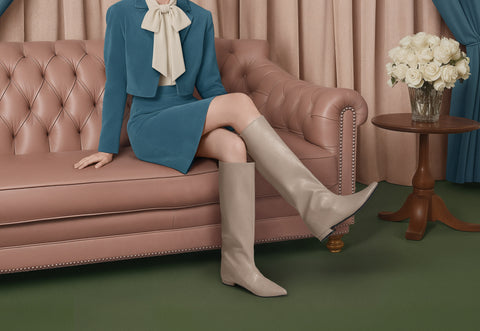
How shoes affect your feet
Many people have experienced the problem of shoes that do not fit properly. There are two types of non-fitting: one that is too big and creates a gap, so you have to put effort into it so that it does not come off, and one that causes pain as a whole or partially. The former uses extra muscles, which can lead to leg cramps, muscle pain later on, and in extreme cases, sprains. In the latter case, the pain may cause numbness in the legs, or cause pain in other parts of the body, such as the lower back, neck, or head. Also, both have the risk of interfering with exercise and disrupting the schedule for the day. It is said that the feet also act like a pump that sends blood to the heart. It is an important organ in the human body, where other important points are gathered. Putting a strain on this part can cause blood to stagnate, and in severe cases, rheumatoid arthritis. Also, when we stand or walk, we use our feet to support our bodies, but we unconsciously maintain balance based on the weight of our pelvis, spine, and head. When this balance is disrupted by shoes that do not fit properly, skeletal distortion may occur. Skeletal strain puts pressure on nerves and puts a strain on organs, often causing headaches and dizziness, which in turn can lead to depression. Also, poor basal metabolism can affect weight gain. Many women tend to wear shoes that interfere with the function of their feet and lead to skeletal distortion. This is because high heels are often worn in both business and fashion. It is said that 70% to 80% of the weight on the foot is originally supported by the heel. Since this burden is concentrated on the toes, it is easy to predict that a high heel will have a large impact on the foot. That's why it's so important to wear heels that don't tire you out.
What shoes fit your feet
In order not to interfere with the day's schedule and physical function, it is important to choose something that does not tire you or put a strain on your body, that is, something that fits your feet. The points to pay attention to when choosing shoes are the height of the instep, the width of the foot, and the length of the toes. If you choose only by size, these factors may not be considered and you may end up with something that does not suit you. In particular, Japanese people are said to have wide feet and high insteps, and most Japanese manufacturers follow this pattern. If you have a low instep height or a narrow foot width, the probability of fitting something that doesn't fit your foot will increase. If you look for a manufacturer that suits you, or have someone called a shoe fitter choose one for you, you will be able to understand the tendency of your feet. When trying on shoes, check if the heel curve matches the shoe curve, if the arch of the foot is in line with the arch line of the sole, if the width is correct, if the toe does not touch the shoe, and the gap is 1 Check to see if the instep is touching the shoe and digging into it. When all these things are okay, the shoe will fit and protect your feet. It is also important to try on both shoes when trying them on. This is because the left and right feet are not the same, and the size and shape of each person may be quite different. In addition, it is said that it is good to press the instep a little because leather shoes in particular will become familiar while wearing.
how to choose heels
Especially when it comes to heels, which tend to cause damage to women's bodies, you want to choose the one that suits you properly. Especially when you have to keep wearing them all day every day for business, etc., choose something that will not tire your body as much as possible. Besides that, it is also necessary to devise ways such as changing to different flat shoes outside the company. No matter how beautiful heels are, they are useless if the way you walk is hindered by pain and strain. The point of choosing a heel that is easy to wear is whether the structure is solid. Choose a thick heel rather than a thin one. In particular, the one that is wider than the vertical width is stable. Also, try twisting it to the left and right, and it is dangerous if it is soft. Choose one that doesn't twist easily. Also, as it supports the side of the arch of the foot and helps balance, it is less tiring. In addition, it is also important that the toes bend in order to walk correctly using the fingers. However, if the whole shoe bends, it will be easy to get tired. Although the overall structure is solid, it will be easier to wear if the toe side is soft enough to bend about one-third of the way. If the strap is attached, the shoe and the foot will be in close contact and the burden will be lightened. When you put them on, check to see if there are any gaps in the heel, if they slip forward, if they stop at the base of your toes, if they are easy to balance when walking, if they don't wobble, and if the width fits perfectly. If possible, keep the heel height under 6 cm. The ideal heel height is said to be 3 to 4 cm. Women who wear them every day, all day long, are looking for heels that reduce these points and don't get tired, which will lead to health and beauty later on.













